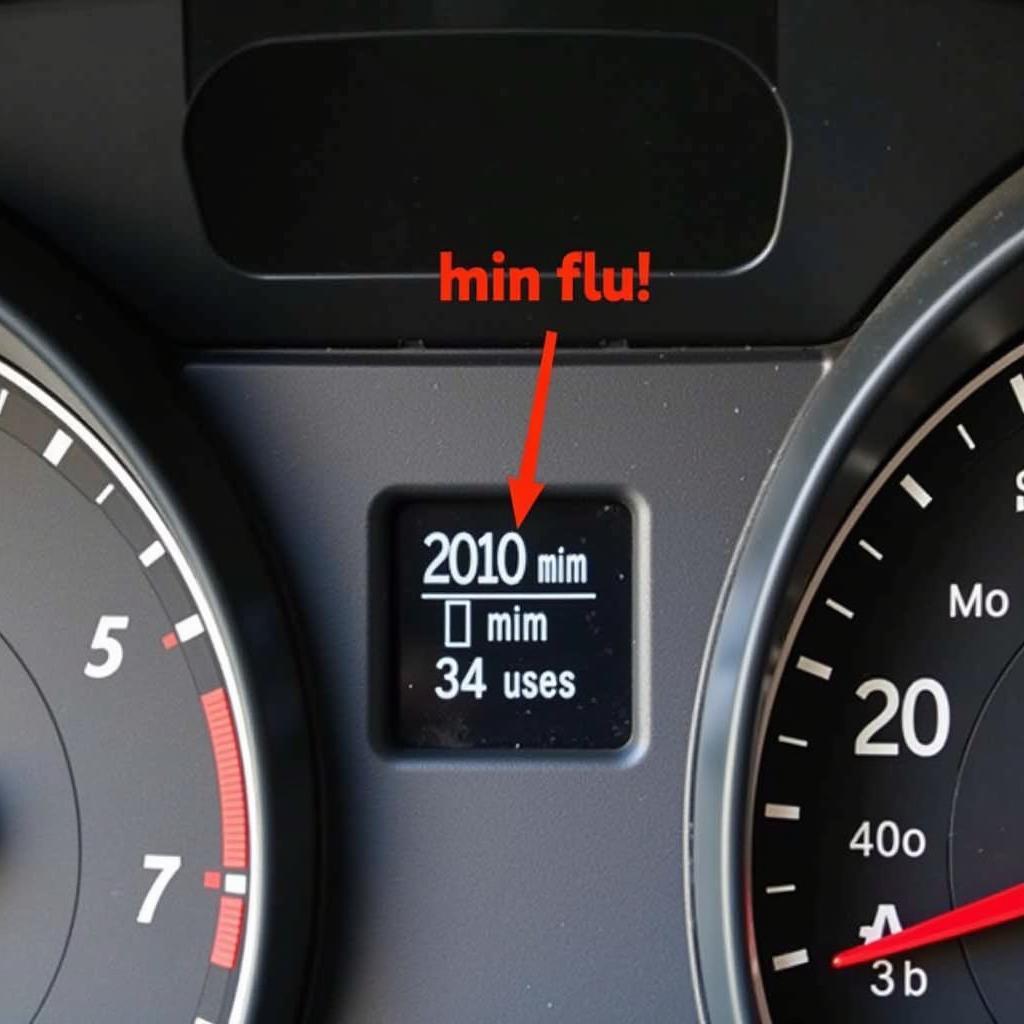A Buick key fob is more than just a way to lock and unlock your car doors; it’s a sophisticated piece of technology that provides keyless entry, remote start, and even anti-theft features. But when your Buick key fob starts acting up, it can be a real headache. From connectivity issues to battery problems, this guide will walk you through common Buick key fob problems and provide effective solutions to get you back on the road with ease.
Understanding Your Buick Key Fob
Before diving into troubleshooting, it’s helpful to understand the different types of Buick key fobs and their features. Buick vehicles come equipped with various key fob styles, including:
- Standard Key Fob: This basic type offers lock, unlock, panic alarm, and sometimes a trunk release function.
- Flip Key Fob: Combining a traditional key blade with a remote, this fob provides the convenience of keyless entry with a physical backup.
- Smart Key Fob: This advanced type allows for proximity-based unlocking, push-button start, and personalized driver settings.
Familiarizing yourself with your specific Buick key fob type can help you narrow down potential issues and solutions.
Common Buick Key Fob Problems and How to Fix Them
Here are some of the most common Buick key fob issues you might encounter:
1. Buick Key Fob Not Working at All
If your Buick key fob is completely unresponsive, the culprit is often a dead battery.
Solution:
- Replace the Battery: Key fob batteries typically last 3-5 years. Locate the battery compartment (refer to your owner’s manual) and replace the battery with a new one of the correct type.
- Check the Key Fob’s Connection: Over time, the battery contacts inside the fob can become dirty or corroded, hindering the electrical connection. Carefully clean the contacts with a cotton swab and rubbing alcohol.
2. Buick Key Fob Works Intermittently
An intermittently working key fob can be frustrating. This problem often points to a weak battery, a range issue, or signal interference.
Solution:
- Replace the Battery (if needed): Even if the battery isn’t completely dead, a weak battery can cause inconsistent performance.
- Check Key Fob Range: Test the fob’s range by moving closer to your Buick. Obstructions or electronic devices can interfere with the signal.
- Reprogram the Key Fob: Sometimes, a key fob needs to be re-synchronized with your vehicle. You can often find reprogramming instructions in your owner’s manual.
3. Buick Key Fob Won’t Start Car
If your key fob unlocks your Buick but won’t start the engine, it could indicate a problem with the key fob’s immobilizer chip or the vehicle’s anti-theft system.
Solution:
- Check Immobilizer Chip: Ensure the immobilizer chip (a small transponder) is properly seated in your key fob.
- Reset Anti-theft System: Refer to your owner’s manual for instructions on resetting your Buick’s anti-theft system. This might involve a specific sequence of actions like locking and unlocking the doors or inserting and removing the key a certain number of times.
- Seek Professional Help: If the problem persists, it’s best to consult a qualified automotive locksmith or your Buick dealership for further diagnosis and repair.
how to reset anti theft system buick lacrosse
4. Buick Key Fob Buttons Don’t Work
Worn-out or damaged key fob buttons can make it impossible to use certain functions.
Solution:
- Inspect the Buttons: Examine the rubber pads on your key fob buttons. If they appear worn, torn, or misaligned, the button signals might not be transmitted correctly.
- Clean the Buttons: Dirt and debris can accumulate under the buttons, affecting their sensitivity. Gently clean the buttons with a soft cloth and mild soap.
- Consider Key Fob Repair or Replacement: In cases of severe button damage, you might need to have your key fob repaired or replaced by a qualified technician or your dealership.
5. Buick Key Fob Programming Issues
After replacing a battery or acquiring a new key fob, you might need to program it to your specific Buick model.
Solution:
- DIY Programming: Some Buick models allow for DIY key fob programming. Consult your owner’s manual for instructions, as the process varies between model years.
- Professional Programming: For more complex programming procedures or if you’re uncomfortable with DIY solutions, a dealership or automotive locksmith can program the key fob for you.
what anti theft alarm does the 2017 buick encore have
Buick Key Fob FAQs
Q: How do I know if my Buick key fob battery is dying?
A: Common signs include decreased key fob range, intermittent functionality, or the need to press buttons multiple times to elicit a response.
Q: Can I drive my Buick if the key fob battery is dead?
A: Yes, most Buick models equipped with keyless entry also have a hidden keyhole. You can use your physical key to unlock the door and start the engine.
Q: How much does it cost to replace a Buick key fob?
A: The cost can vary depending on your Buick model, the type of key fob, and where you have it replaced. On average, expect to pay between $150 to $500 for a replacement fob, including programming.
how to turn off anti theft on buick
Tips for Extending the Life of Your Buick Key Fob
- Avoid Dropping: Dropping your key fob repeatedly can damage internal components, including the battery contacts and the immobilizer chip.
- Keep it Dry: Exposure to moisture can corrode the battery and circuit board.
- Store it Safely: When not in use, store your key fob away from extreme temperatures and strong magnetic fields, which can interfere with its electronics.
Conclusion
A malfunctioning Buick key fob can disrupt your daily routine. By understanding the common issues and following the troubleshooting steps outlined above, you can often resolve the problem yourself. However, for persistent or complex problems, seeking help from a qualified automotive locksmith or your Buick dealership is always recommended. Taking proper care of your key fob can also extend its lifespan and prevent future inconveniences.

